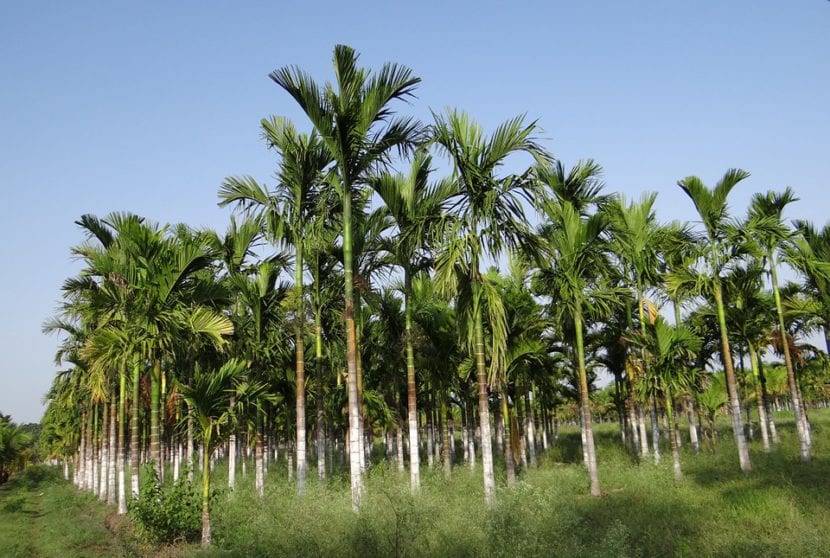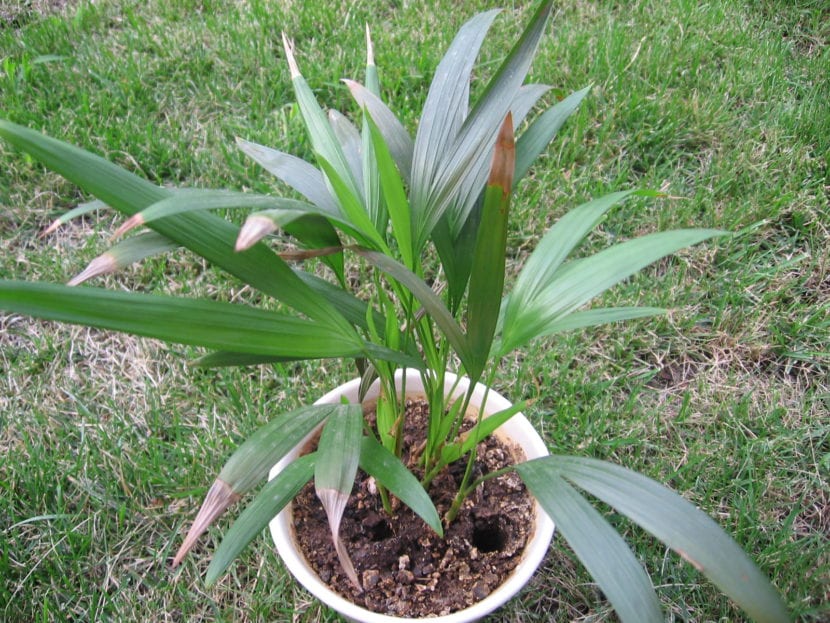
The palm areca It is one of the plants most used to decorate interiors, as its size and elegance give an exotic touch to any room, even if it is indoors.
But there are many things that we do not know about this plant, although that has an easy solution. In this article we are going to reveal the best kept secrets of this plant so that it is much easier for us to take care of it.
Areca, what palm tree is it?

Areca catechu plantation.
Common names often create confusion, since a single name can be used to refer to two or more plants that are totally different from each other. One of them is precisely that of areca. There is a botanical genus of palm trees that is called that, but that has nothing to do with our protagonist.
In fact, to know how different they are, it is enough that we know that the Areca have a single trunk, while our protagonist, whose scientific name is Dypsis lutescens, it is multicaule, that is, it has several trunks. The leaves are also very different: while the former grow slightly arched and do not exceed a meter in length, the D. lutescens They are very arched downwards, even brushing the ground, and can measure more than 1m.
And sometimes it is even confused with the kentia, a single-trunk palm tree. So here is a video so that you know how to differentiate it:
How are they cared for?
Our protagonists, and in fact all those of the Dypsis genus, are palm trees that adapt well to living indoors, but they want light. For this reason, the ideal would be to have them in a very bright room, in which a lot of natural light enters. Of course, there should be no drafts, neither hot nor cold, since otherwise the leaves would turn ugly in a short time.
If we talk about watering, it will have to be weekly, except in summer when it must be watered every 3-4 days. It is very important that do not have a plate under it or at least remove the excess water after 30 minutes of watering. Likewise, it is advisable to fertilize during the warm months with liquid organic fertilizers, such as guano, or seaweed extract (do not abuse, as it is very alkaline. Use for example one month this and the next month another).
Do I have many seedlings or is it just one?

If you have decided to have a palm tree of this species, you may wonder if you are going to take home one or more. Well, the answer is this: while the Dypsis lutescens it is multicaule, it begins to take out the suckers when the stem is at least 1,5cm thick. By then, the leaves it has are adult, that is, pinnate. The problem is that pots are sold in which there are many specimens, and each one of them will do the impossible to survive. Still, in the end only the strongest will live.
Of course, these seedlings can be separated in spring and then plant them in individual pots with 60% coconut fiber and 40% universal growing medium. So you can have new palm trees.
Did you know these details about the »fake» areca? 🙂